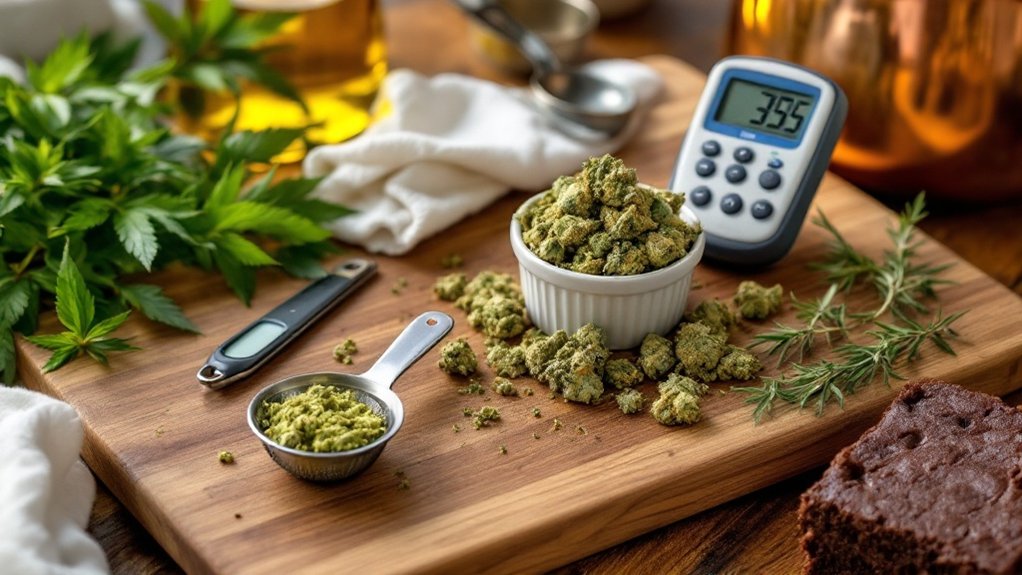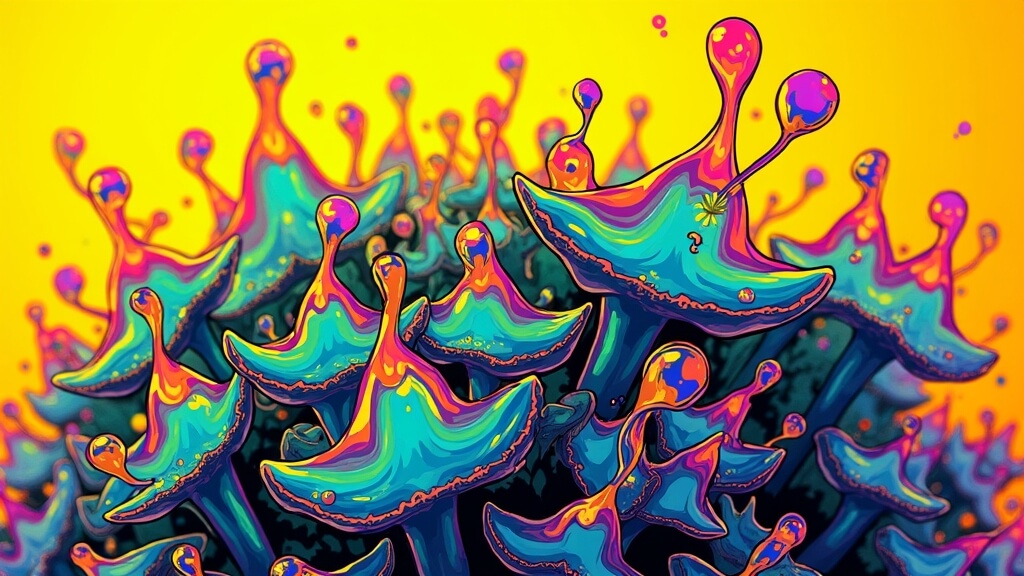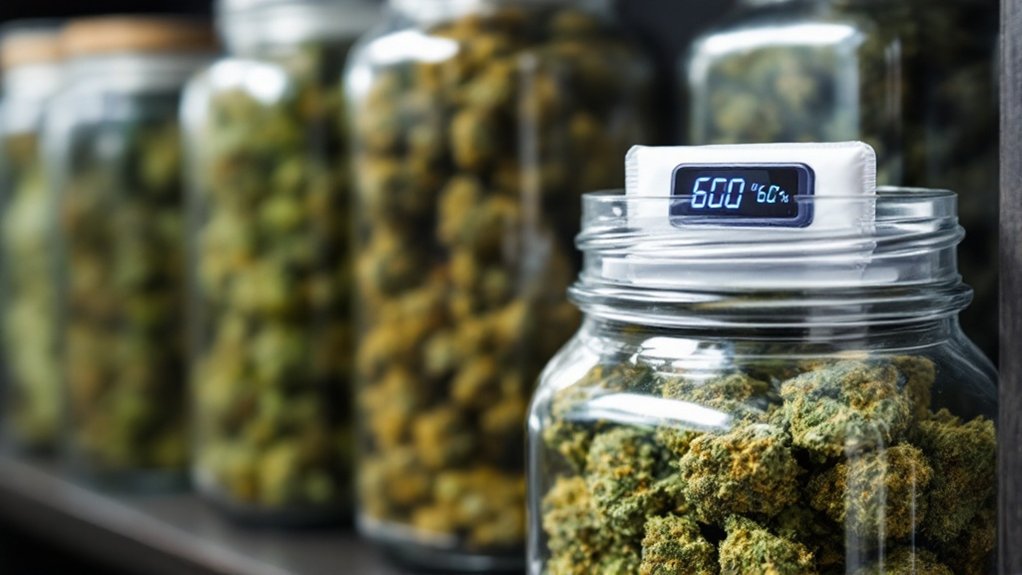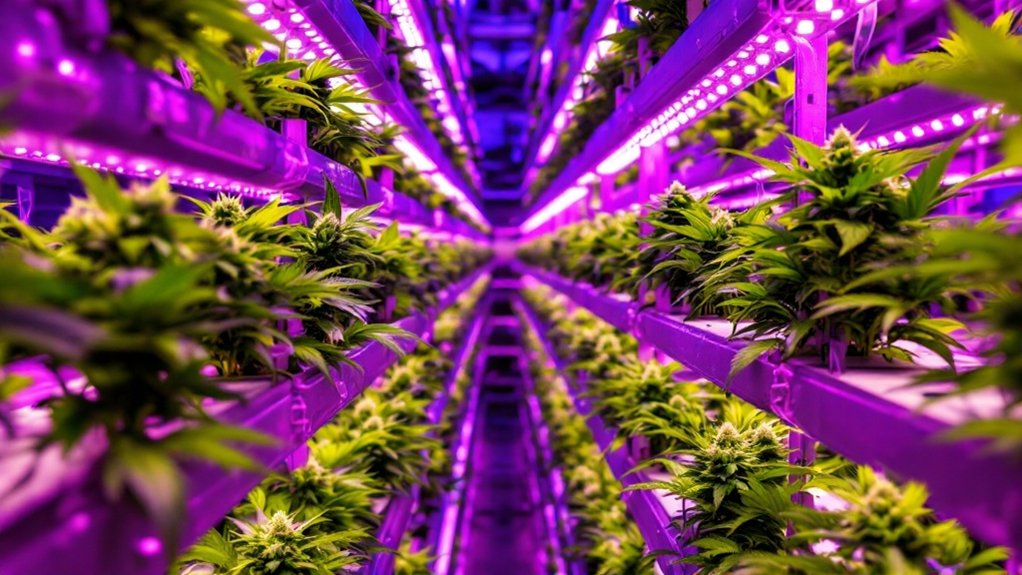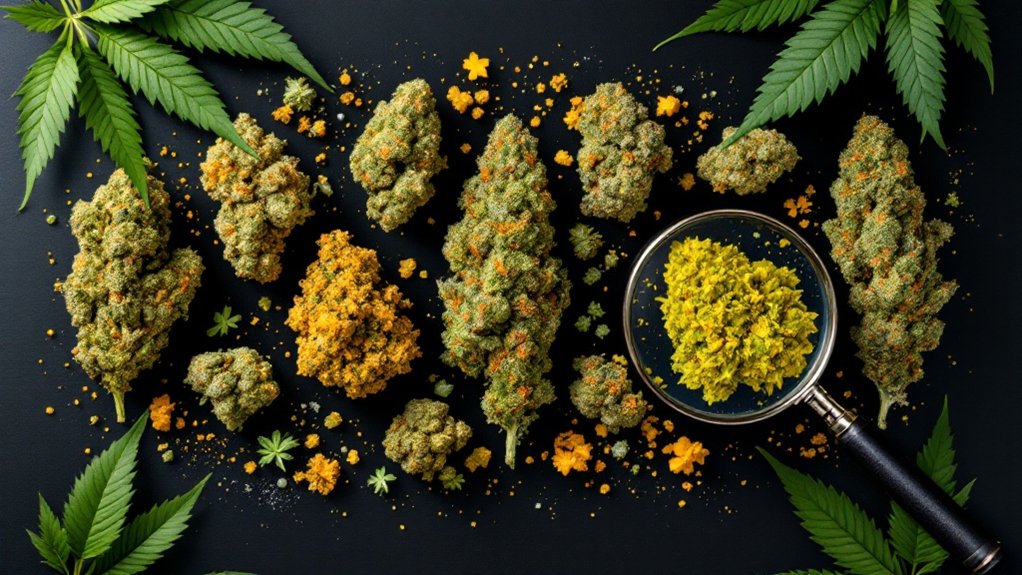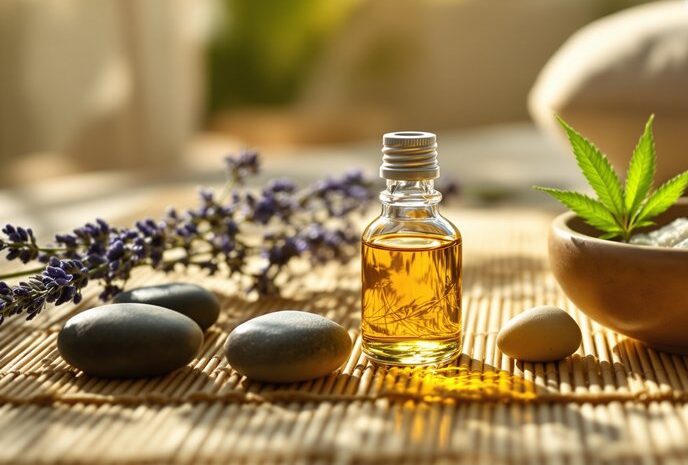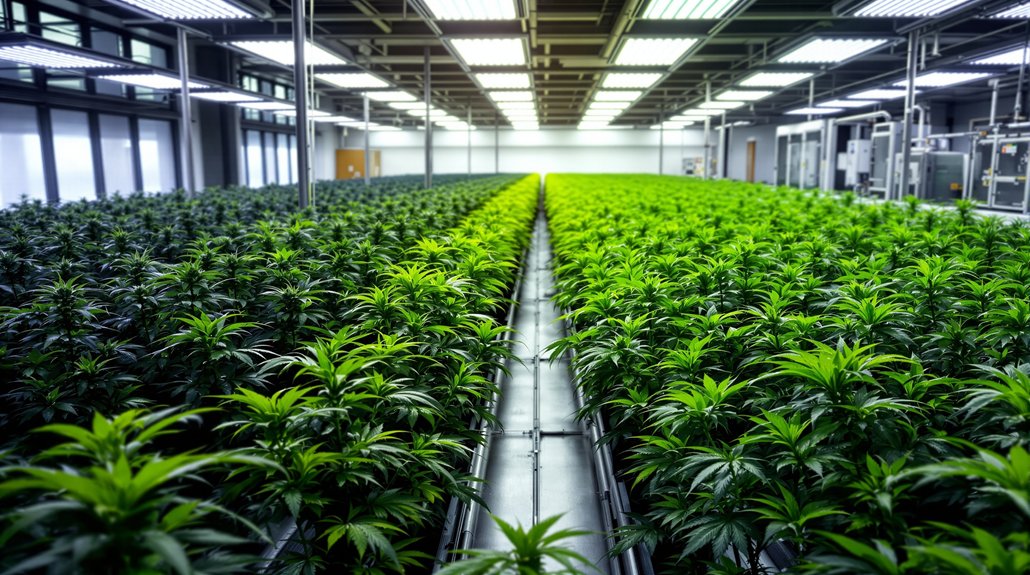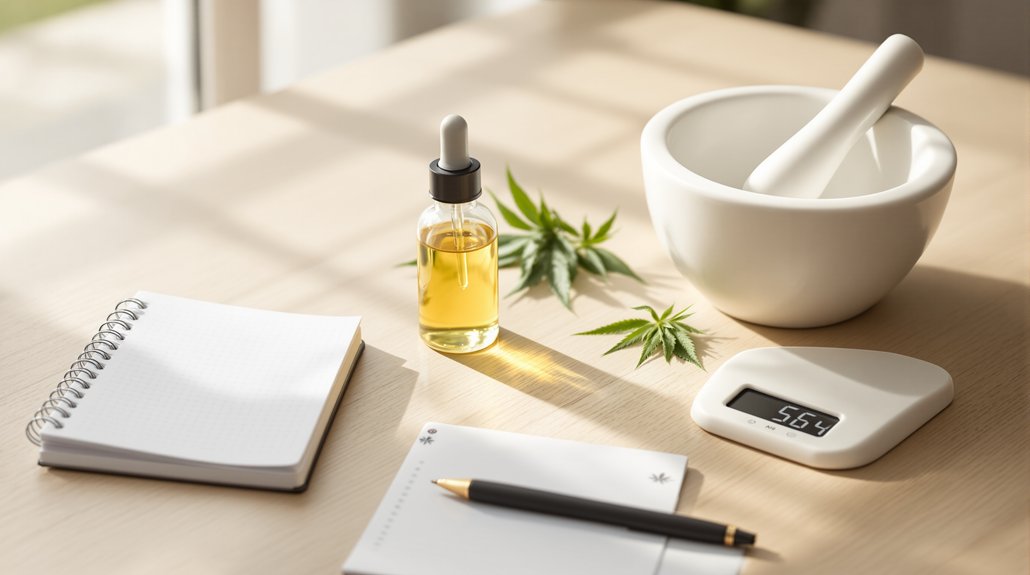Cooking with cannabis requires essential steps for success. First, decarboxylation – baking weed at 245°F for 30-45 minutes, activates the THC. Skip this step? No high. Next, infuse the activated cannabis into fat (butter or oil) over low heat for hours. Temperature control is vital; too hot destroys potency. Beginners should start with tiny doses, 2.5-5mg THC. Strain selection matters for both flavor and effect. The difference between a pleasant evening and a regrettable one lies in the details.
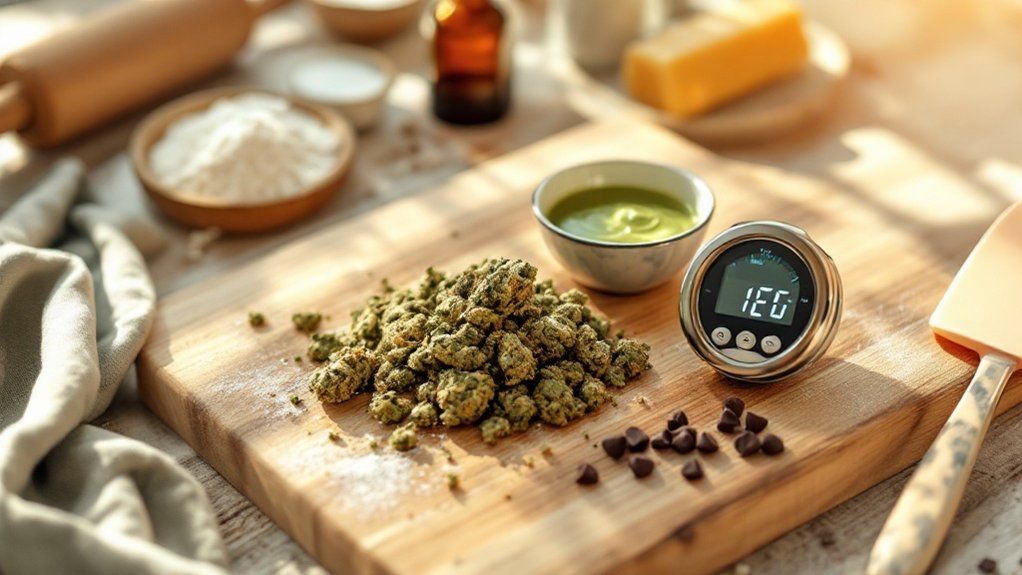
As cannabis legalization spreads across the country, home cooks are discovering there’s more to marijuana than just smoking it. The kitchen has become the new frontier for cannabis enthusiasts. And guess what? You don’t need fancy equipment to get started.
Before cooking with cannabis, decarboxylation is vital. This process activates the THC. Preheat an oven to 245°F, spread cannabis flower evenly on a baking sheet, and bake for 35-45 minutes. Flip those buds every ten minutes. Seriously, don’t skip this step. No decarboxylation means no high.
Once decarboxylated, cannabis needs to be infused into a fat. Butter, oil, whatever. Fat works as a carrier. For cannabutter, melt butter in a saucepan over low heat, add water and your cannabis, then simmer for two to three hours. Strain with cheesecloth to remove plant material. Nobody wants green bits stuck in their teeth.
Temperature control can make or break your infusion. Too hot? You’ll destroy the THC. Keep it low and slow. Think of it as babysitting a pot of gold. A good thermometer isn’t just helpful – it’s essential. Low-temperature baking is especially important when using cannabutter in cookies and cakes to preserve THC potency and ensure your edibles deliver the intended effects.
Dosing matters. A lot. Start with 2.5-5mg THC, especially if you’re new to this. Edibles hit differently than smoking. Way differently. They take longer to kick in but last longer too. Overdo it and you’ll be having conversations with your furniture for hours.
Strain selection impacts both effect and flavor. Some strains complement chocolate desserts, others work better in savory dishes. Different strains, different experiences. Be aware that THC-rich strains will provide a much more intense head high compared to balanced THC/CBD varieties. Choose wisely.
Once you’ve mastered the basics, any recipe using fat can be adapted. Brownies are classic, but why stop there? Pasta sauces, salad dressings, even morning coffee can get an upgrade. Be sure to clearly label cannabis-infused foods to prevent accidental consumption by unsuspecting family members or guests.
Frequently Asked Questions
What Temperature Should I Use to Decarboxylate Cannabis?
The ideal decarboxylation temperature for cannabis falls between 230-250°F (110-121°C).
At 240°F, most cannabinoids convert effectively without degradation.
Time matters too. Thirty minutes at 230°F works for THCA, while CBDA needs 45 minutes.
Above 300°F? Forget it – you’ll destroy cannabinoids and lose terpenes.
Many home ovens lie about their temperature, by the way. An oven thermometer isn’t optional. It’s essential.
Can I Cook With CBD Instead of THC?
Yes, cooking with CBD instead of THC is absolutely possible.
CBD won’t get anyone high – period. It offers potential benefits like anxiety reduction and anti-inflammatory effects without the psychoactive punch.
Heat stable? Mostly. Just don’t go crazy with temperatures.
Legal complications? Fewer than THC, since hemp-derived CBD (under 0.3% THC) is more widely permitted.
Perfect for folks wanting the therapeutic potential without feeling like they’re floating through space.
How Do I Calculate Appropriate Dosage for Edibles?
Calculating edible dosage isn’t rocket science, folks. It’s math. Multiply cannabis weight (grams) by THC percentage, then by 1000 to get total milligrams.
Factor in about 70% transfer efficiency during infusion. Divide by number of servings. Simple.
A 2-gram batch of 20% THC cannabis yields 400mg total, but only about 280mg makes it into your brownies.
Cut into 28 pieces? That’s 10mg per serving. Start low.
Will Cooking With Cannabis Make My Kitchen Smell?
Yes, cannabis cooking will definitely make your kitchen smell. No way around it. When cannabis heats up, those aromatic terpenes go airborne – fast.
Decarboxylation creates the strongest odor, especially with large batches. Different methods produce varying intensity. Some kitchens become temporary hotboxes. Ventilation helps, obviously.
Using airtight containers, sous vide, or distillates can reduce the smell. But completely odorless cannabis cooking? Good luck with that one.
How Long Do Cannabis-Infused Oils and Butters Last?
Cannabis-infused butters last just 1-2 weeks refrigerated. Not exactly marathon runners in the shelf-life department.
Oils fare better, lasting several weeks to months. Freezing cannabutter? Smart move – extends life beyond six months.
Coconut oil infusions are the real champions, lasting up to two years when stored properly.
Room temperature storage? Risky business. Five to seven days max before things get funky.
Forget proper storage and you’ll be tossing money, and potential relaxation straight into the trash.
